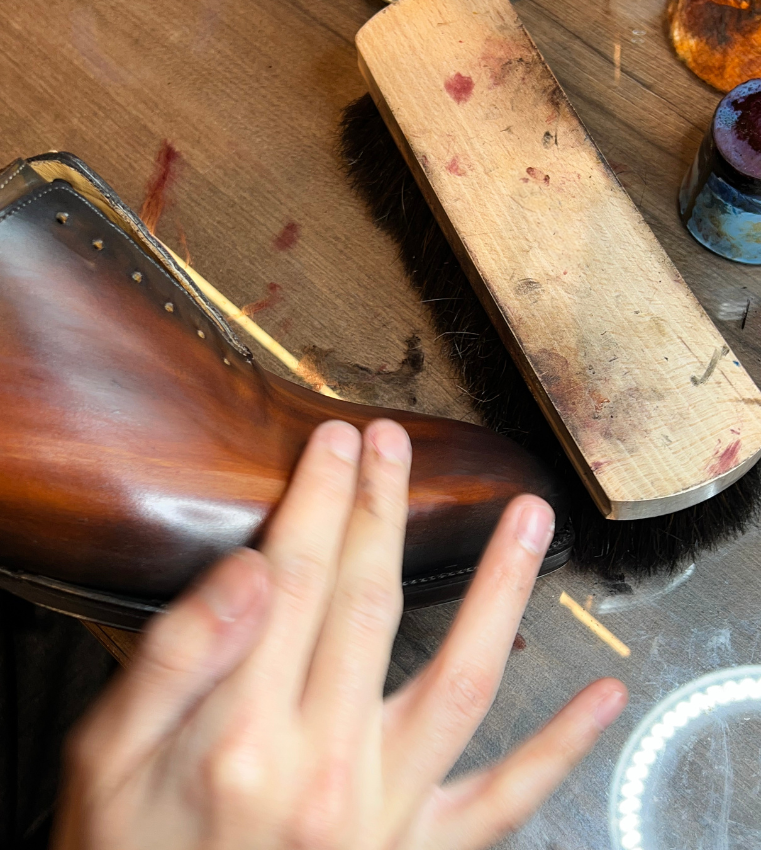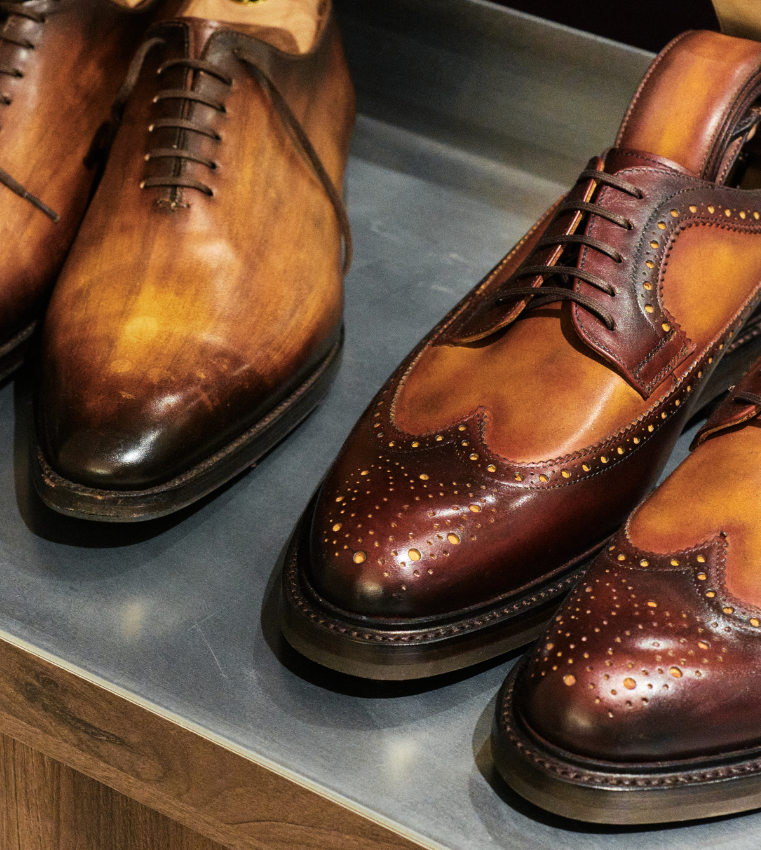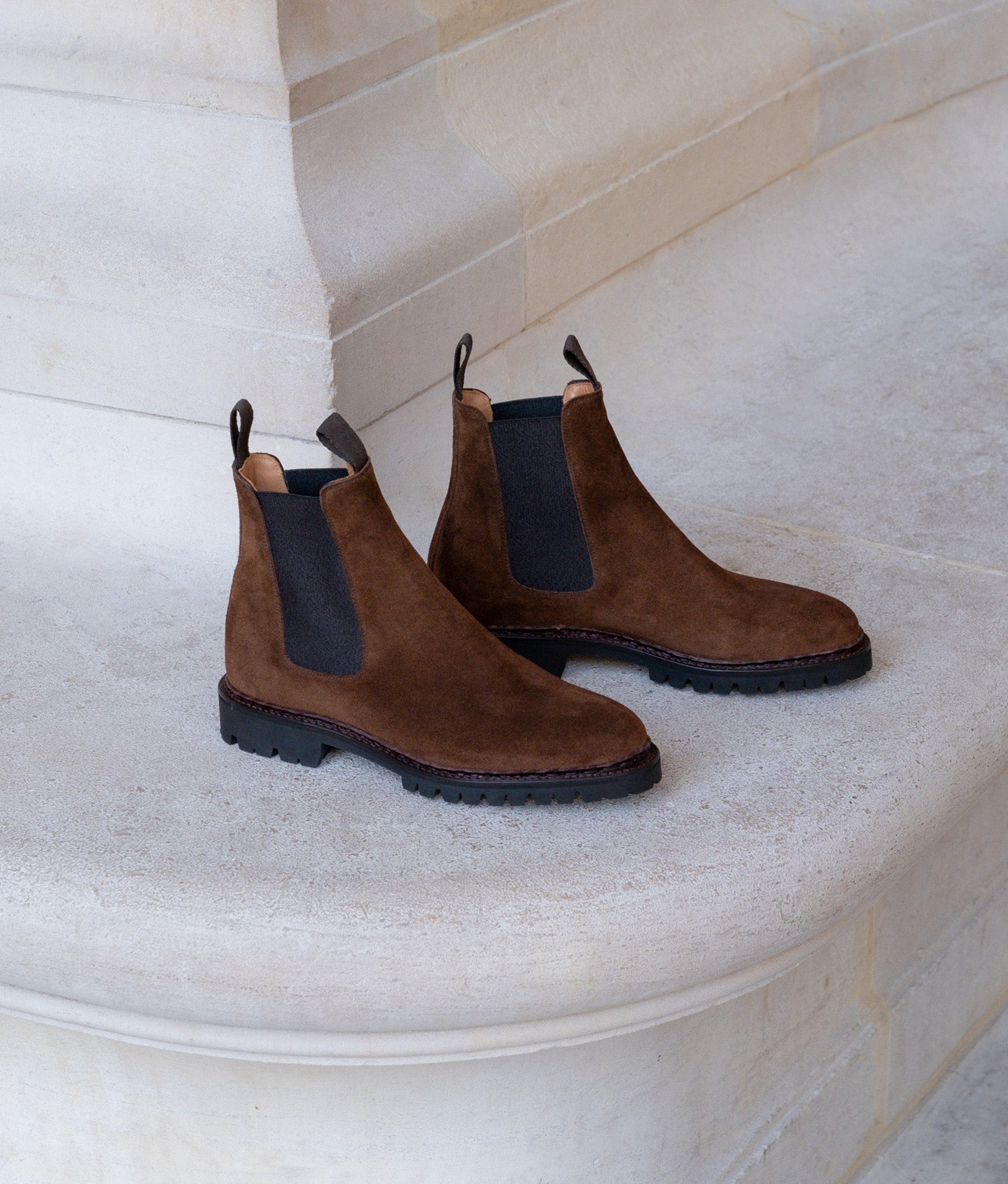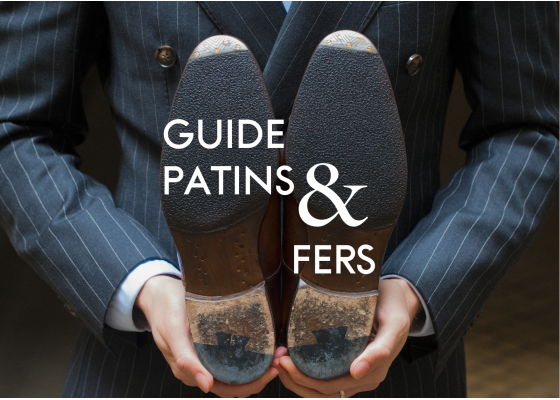A question regularly asked in stores, and the answer to which is often unknown, here is how to distinguish “Velvet” leather from “Nubuck” or even “Suede”.

A question regularly asked in stores, and the answer to which is often unknown, here is how to distinguish “Velvet” leather from “Nubuck” or even “Suede”.
In addition to their soft peach skin appearance, these types of leather (called suede by the English) are distinguished by their manufacturing. We will detail their distinctions.
What is suede calfskin?
In order to understand what suede calfskin is, let's take a moment to look at the leather finishing processes. After tanning, the skin (putrescible and damp material) becomes leather (rot-proof and dry material) by fixing tanning agents.
The skin, which has now become leather, is split in two (slitting), so there are two distinct parts: the leather and the crust.

We will focus on the leather part, because it is the noblest and the one used in the high end. On this leather, the part where the epidermis and the hair follicle (animal hair) were located is called the grain of the leather. We also speak of “flower side”. The reverse side, for its part, is called “flesh side” because it was in fact in contact with the rind before the splitting operation.
Velvet is part of leather, it is simply the flesh side of it.

Calf suede, unlike nubuck, is generally brushed, which makes its appearance more textured and less fine. We can distinguish small filaments which are characteristic of it and which are due to its treatment.

What is nubuck?
Nubuck (just like Suede) is not an animal as some might think! Unlike Velvet, the material called Nubuck comes from the upper part of the leather, the grain side.
This layer is finely sanded with an abrasive material (fine sandpaper if this operation is carried out manually) in order to obtain this unique appearance.

This sanding work is delicate and will not be able to hide any imperfections in the leather. It is therefore necessary to have a very high quality skin to create genuine nubuck leather.
The thickness of the hide is a very good indicator of quality, because like a more common smooth leather, there are several grades of nubuck.
And the suede in all this?
Suede or suede leather, for its part, is a generic name anchored in the vocabulary but is in reality an approximation of language: it simply designates a leather with a textured appearance, in reference to the appearance of the animal's coat .
Indeed, suede is a protected species and its leather has not been used for a long time. The terms suede and suede are therefore quite broad and designate two types of leather: velvet or nubuck.

"It's fragile ?!" : How to maintain your suede calfskin shoes?
Contrary to popular belief, calfskin is very easy to maintain and is not fragile. It is also resistant to bad weather, however it should not be dried near a heat source but at room temperature on shoe trees.
For maintenance, you will first need to dust the shoe with a shoe cleaner in order to remove as much dirt as possible. Then, you will need to “de-gloss” the skin with a brass brush .

In fact, the hairs can become compacted and smooth, taking on a blackish appearance. A crepe brush (more aggressive) can be used in addition if the brass brush is not enough. It should be used locally and not on the entire shoe. Finally, protect your shoe with a waterproofing agent, like Saphir Super Invulner .
Once a month, you can also completely clean the shoe using a cleaner and a renovator.
In summary
1. The suede calfskin is part of the leather part and is on the flesh side
2. Nubuck is also part of the leather part but is on the grain side
3. Suede is a language approximation
4. Don't be afraid of suede! It's easy to maintain
It will therefore be advisable to place shoe trees as soon as you remove your shoes so that the humidity is absorbed (provided that your shoe trees are made of raw wood). In addition, these will stretch your shoes so that they return to their initial shape in order to avoid creases as much as possible. However, it is necessary to keep in mind that pleats will be inevitable.







